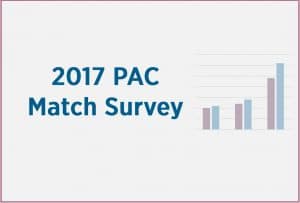[vntd_hero_section images=”52277″ heading_dynamic=”PIN Points” subtitle=”November 2017″ button1_label=”” bg_overlay=”dark_blue” height=”custom” height_custom=”400″ heading_font_size=”50px” tooltips=”%5B%7B%22tooltip_title%22%3A%22Hello%20there!%22%2C%22tooltip_url%22%3A%22%23%22%2C%22tooltip_placement%22%3A%22top%22%2C%22tooltip_depth%22%3A%220.42%22%7D%5D”]
Greetings from PIN Chair Greg Knopp

I have a note taped above my desk to help me focus on the first and last ten minutes of each day. Before reading a single email in the morning, it reminds me to plan out my priorities for the day, including which key project or activity should demand my immediate attention. The last ten minutes of the day ideally should be spent reflecting on what went well, along with what I learned about the challenges I faced. The idea is to begin the day with a plan to meet at least one major goal, and end it with a recap and some introspection.
Maybe we should begin each month and each year that way.
This issue of PIN Points aims to tie up the past year by looking back at some recent key activities — including the PAC Match survey findings, links to all the professional development webinars we hosted, and past articles and resources. It’s also a nod to plan for the coming year, along with highlighting the Council’s new Certificate program which we will feature in future issues.
Looking back to reflect, and looking ahead to plan are obviously essential to every program or organization that wants to grow, evolve and thrive. But I would add another element – the importance of recognizing and celebrating achievement and success. Far too often we move immediately from one goal and accomplishment directly into the next. There is no pause for reflection and even less for praise and recognition. Too much to do, we are told, ‘gotta get going onto the next big thing’ (we tell ourselves). No time for something as trivial as celebrations – or is there?
Mother Teresa once said that “There is more hunger for love and appreciation in this world than for bread.” She’s right, of course. According to Forbes, 43 percent of employees cite a lack of recognition for their work as their reason for quitting. Mary Kay Ash of Mary Kay Cosmetics had a slightly more colorful way to express the same sentiment: “There are two things people want more than sex and money: recognition and praise.” You get the drift.
Some friendly advice: take time this holiday season — more time than you would normally allow yourself — to pause and reflect on what went right and what your challenges were. Consider what falling short of some goals taught you about your programs and yourself, how failure helped you grow.
But more importantly, stop and celebrate whatever success you did have, as well as the successes of others you work with and for. When you do that, you truly plant the seeds of future success. The Dalai Lama himself noted, “The roots of all goodness lie in the soil of appreciation for goodness.” Big hitter, the Lama.
Have a safe, happy, and especially grateful holiday season. You earned it.
Congratulations to our Recent PAC and Grassroots Management Certificate Recipients
Pictured above are a few of our most recent graduate from the Certificate in PAC & Grassroots Management program. Not pictured: Kati Lorge, Sentry Insurance Company; and Lisa Strikowsky, Guardian Life Insurance. Congratulations to you all!
Innovation Awards Deadline Extended to Dec. 1
[vc_btn title=”Nominate Your Organization” color=”juicy-pink” align=”center” i_icon_fontawesome=”fa fa-trophy” add_icon=”true” link=”url:https%3A%2F%2Fwww.surveymonkey.com%2Fr%2Finnovationawards2018||target:%20_blank|”]Don't Miss Our Last Two PIN Events of 2017
Webinar: 2018 Midterm Election with Nathan Gonzales
Complimentary for members
Dec. 4 | 2-3 p.m. EST
Strategic Thinking for Senior Managers
(Joint event with the Association Network)
Complimentary for members
Dec.12 | 3-4:15 p.m. EST
PAC Match Survey Results Now Available

Member Resource: Tip Sheet on Social Media Security and Privacy

Social media is a double-edged sword. It can be helpful in connecting you with long lost friends or relatives. It can also be helpful keeping you updated on what’s going on in the world today. However, because it’s a place where anyone can connect with you, there’s always the risk that you might run into some unscrupulous people. To minimize this risk, it’s good to do a privacy checkup on your accounts.
Don't Miss These Signature Events in 2018
The Advocacy Conference
February 5-8
Orlando, Fla.
*Register by Dec.14 and save
Learn More
National PAC Conference
March 4-7
Miami, Fla.
*Register by Jan.18 and save
Learn More
ICYMI: Professional Development Webinar Recordings Available

How to Pitch an Idea to Your Boss
Moving Up or Moving On: How to Effectively Elevate Your
Career
How to Be a Leader – When You’re Not in a Leadership Position
Demonstrating Your Value Through Resumes and Interviews
Staff Column: Applying Agile Management to the Public Affairs Function

Agile management tactics are now widely used by software companies, but it can be applied to the world of government relations and public affairs.
Corporations can spend millions of dollars on their public affairs and external relations programs, but managers often forget to ask the most important question: is my public affairs function truly effective? Modern public affairs departments should be quick and nimble, but traditional management models are often unsuccessful at changing directions or managing crises. To keep up with this new dynamic, public affairs managers might want to turn to agile management methodologies to increase effectiveness.
What is agile management?
Agile management is a management method widely used by software companies and is based on the principles of flexibility, project-based work and the streamlining of the management process. Agile rejects traditional management concepts like meticulous step-by-step procedures or top-down hierarchy, and instead, focuses on exact tasks to achieve progress, horizontal management, and integrated teams. You can read the principles of agile management here, but know that it’s a management method that enables innovation and rapid progress. All of this makes sense in the software world, but it can also be applied to the work of lobbyists, communicators, advocacy professionals and political affairs specialists.
Applying agile outside software development
There are now numerous companies applying agile management principles across all industries and business functions. National Public Radio (NPR) recently used agile to organize the release of their new website and is now deploying these same management tactics to their newsroom. From HR teams, to product development divisions, to corporate legal teams, managers are using agile to make improvements to their workflow, build a strong team that can self-organize, communicate and collaborate fluidly. Now let’s tackle how public affairs departments can specifically use agile to improve their effectiveness.
How is agile applicable to public affairs?
Organizing public affairs departments can be difficult since employees are typically siloed across multiple different departments. But these employees need to work collaboratively to achieve a desired public policy or reputational outcome. For example, it slows down productivity when the public affairs department doesn’t have immediate access to communications or legal. In addition, public affairs functions have to manage the ever-changing political and regulatory arena. How are teams able to keep quickly adapt strategies and change direction? The answer is agile and here are three ways you can start implementing it:
1. Flatten your hierarchy, empower your employees and integrate your teams.
Agile is built around ensuring that a project meets the set goals and tries to remove all barriers to goal achievement. This often means developing new teams based on a particular project. Teams that have members with varying expertise should be able to work collaboratively and across your organization but that can be impossible when the organization defines every role and responsibility. It’s impossible to respond quickly to a politician’s tweet or develop a compelling infographic without collaboration. When titles, hierarchy or individualism reigns supreme, agile management methods should flatten your organization and empower small teams to help achieve your goals.
2. Forster constant communications between colleagues.
How often do we sit in long quarterly meetings to find out information that is months old? Even weekly meetings can be ineffective at solving problems or challenges. Agile management methods suggest having a stand-up meeting with your immediate team each workday. The National Retail Federation has a stand-up meeting every morning so that employees can solve issues and collaborate on a daily basis rather than waiting for a weekly meeting. This means less time waiting for an answer and more time working towards a solution.
3. Developing goals that are immediately actionable and dynamic
Agile management methods suggest that you should break down large-scale goals like passing a piece of legislation, into smaller manageable goals that can be measured on a weekly basis. Goals should be something that you look at more than just once a year. In addition, agile management helps teams adapt quicker to changing political circumstances. If you develop public policy priorities just once every two years then you’ll be unable to take advantage of the changing environment, and political developments. Find new opportunities for your public affairs function by crafting goals that are responsive to a reputational crisis or political gridlock.
Making the switch
Agile management offers the necessary solutions to management issues facing the public affairs profession today. It takes a modern, rapid, and responsive approach to carrying out tasks and ensuring your public affairs function is effective.
Participate in our Network Satisfaction Survey
We invite you to take part in our survey regarding your involvement in the PIN and our other members-only networks you may belong to.
Your input will help us increase the value of our networks – so it’s vital that we hear from you!


